In 2013, Culture Attack Studio released Aces Wild: Manic Brawling Action! (AW) for PC and Steam. The game tells the story of a youngman on a quest for justice as he fights his way through his enemies–many, many enemies. Battles take place across colorful 2D stages of dangers ranging from ninjas, robots, valkyries, and etc.
AW isn’t just any other kind of beat’em up as per it’s description:
Aces Wild is a fast-paced, hardcore, aerial beat ’em up! Engage in insane aerial martial arts combat against countless opponents!
It utilizes a ‘Wild Meter’ which increases the power of your attacks but also makes enemies more aggressive!
You play as Ace Wilder trying to defeat your brother Rex in a tournament where he and all the other entrants have colluded against you. Utilize a wide range of offensive and defensive skills to defeat hordes of enemies all at once and go for a high score! There are several playable characters and local co-op play!
AW is a new breed of beat ’em up; one that tests you to be aware of your movement, space, and enemies at all times.
We spoke with sole developer/artist, Tyler Doak, about the game’s influences, his inspirations, and the fine line of game difficulty.
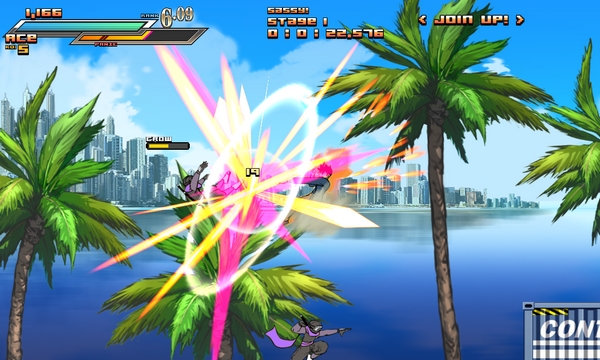
JR: What inspired you to get into game development?
Tyler Doak: I’ve played games my whole life. It’s always been my biggest past-time besides art and it’s filled with so many wonderful things: Visuals, music, characters, mechanics, story, technology. It goes on and on! I’ve always had interests a bit wider than just illustration, so my knack for a wider range of things helps a ton when you want to develop games.
When I was about to graduate college with an Art degree, I was chatting with a friend about what we were gonna do when we graduated. I told her I’ve always wanted to work in games, but it always seemed more like a dream than a goal. She told me I was being ridiculous–and she was right.
Normally, I’m the type of person who believes in over the top self-motivation, but even I fell victim to fears. So that night, I hit up RPG Maker, which I had dabbled in through high school, and started making characters–really big, fighting game inspired sprites. I worked on that game, for about a year and a half, and eventually abandoned it, but I learned a lot at that time.
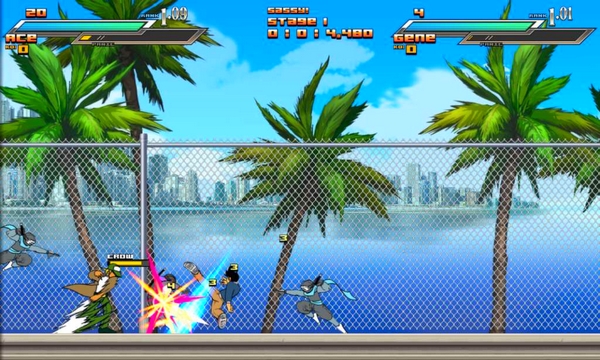
I was trying really hard to get a good playable demo out for this game, but I kept thinking about this beat ’em up style game I wanted to make–and even back when I was speaking with my friend, I had wanted to make an action game, but RPG Maker seemed like it would be easier. For about 3 months, I would be thinking about this action game instead of the game I was working on. Eventually, I gave in and made the first animations for Aces Wild.
I had a lot to learn, but I made sure to pick an avenue that would teach me a lot. I wanted to really know how to program so that I could do everything without (much) issue. I decided on the XNA framework which basically filled all those needs–plus it was free and Microsoft had tons of free tutorials to go with it.
Generally, as an artist, I think of things–ideas I want to express– in terms of games. I had always done this, but it was only after being deep in developing Aces Wild, did I really come to understand it fully. I just have to make games!
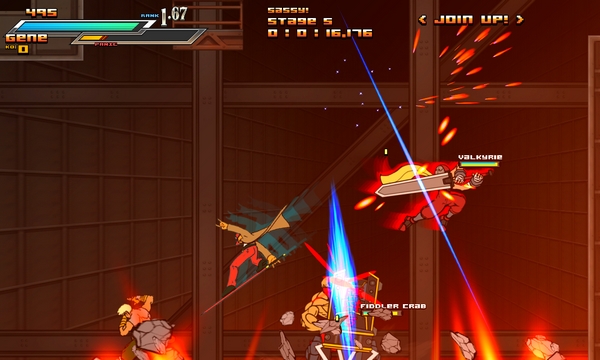
JR: What were your artistic influences?
TD: Visual Influence: When I was younger, I looked a lot at Rumiko Takahashi and stuff from Mega Man, Squaresoft and Hal Lab games. Basically copying Kirby, Final Fantasy and Chrono Trigger non-stop, lol. Specifically, with Aces Wild—Kirby Superstar was a big influence on the gameplay and visuals–really dynamic 2D gameplay.
As I got older, I fell more and more in love with Capcom–particularly with their fighting games. I’ve played fighting games competitively since 2nd grade–my best friend’s parents owned an arcade, so we got really good, lol. I just love the focus on unique, muscular bodies, different races and characters. It’s all so awesome. I’ve also just had a love for martial Arts and fighting too.
Nowadays, I’ve noticed I draw a lot like Tetsuya Nomura. I suppose his style captures a lot of what I like–very stylized and cartoonish and yet all the characters look unique–like real people. My other idols are Akihiko Yoshida and Kinu Nishimura.
Game Design Influence: I didn’t play many Treasure games growing up, but as I was working on Aces Wild, I realized I approach games a lot like they do. Very arcadey, but deep as well. But having played fighting games so much that plays into it too. Late in college, I got into Manic Shooters as well–ESPRade, Dodonpachi, etc. Now they’re one of my favorite genres along side character action and fighting games. Godhand + Kirby Superstar + Bangai-O is basically what Aces Wild is.
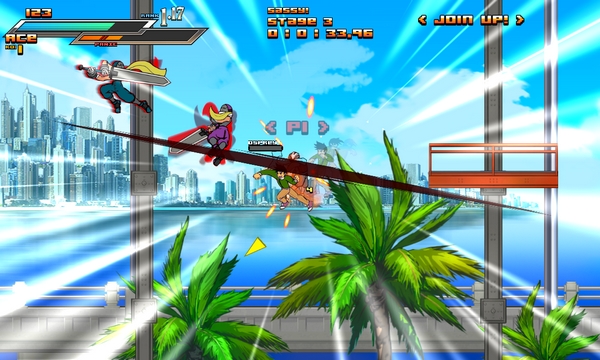
JR: Aces Wild captures a strong sense of “you can’t stop me” as enemies continue to fight you. What inspired this?
TD: Did you know that the main theme for Aces Wild is named “you can’t stop me”?!
My basic premise was wanting a Dynasty Warriors type game that wasn’t so mindless and mashy (sorry if you like Dynasty Warriors). I wanted a game where you fought tons of enemies but had a bit more depth like Devil May Cry or Godhand.
I also wanted a game that really took advantage of the 2D space. Here’s why the attack controls are based on directions. In the beginning, you couldn’t really fly–as each build came out the more and more mobility you got and eventually became the manic aerial combat that Aces Wild is today. I had also wanted a lot more environment destruction, but it was too difficult for me at the time. Look forward to that in a sequel!
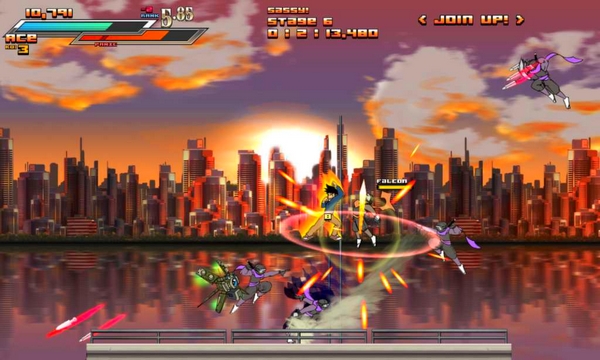
JR: So what’s the deal with the random stage enemies that pop out of thin air? Did you add them to keep players on their toes at all times? Note: There are enemies that aren’t visibly waiting to attack like most enemies.
TD: Those are bonus ninjas! But yeah, it’s just a nice random moment of anxiety that makes you feel awesome when you overcome it. In actuality, it’s not random, there’s a counter based on how many ninjas you’ve defeated and it’s multiplied by your wild and rank.
JR: Aces Wild is quite a demanding game, did you intend for it to be this challenging from the start?
TD: Yeah, I like difficult games–or rather–games that test you and push you. It may surprise you to know that I’m actually quite awful at video games that aren’t fighting games. I feel like my clear times are always double of what my friends’ are in games like Dark Souls. One of the best compliments I ever got about Aces Wild was — “All this crazy stuff was happening on the screen” — but it was all by my hand, I did that. That’s the feeling I want to capture in all my action games; talent, style, expression.
JR: What was the most difficult part in developing Aces Wild?
TD: All of it! I had to learn a lot. I had a tiny bit of programming experience, but my degree was in Art. Everything was done from scratch so I had to build a level and animation editor alongside the game itself. The game uses frame by frame 2D animation and there are — many sprites. I can’t believe I even did that.
In one sense, all the animation work was difficult in that it was time consuming, but really the actual “game design” is the most difficult. Designing mechanics, coming up with novel or arcadey concepts then implementing and balancing them, it’s super rough. It’s weeks of just staring at a blank notebook, trying out and scrapping tons of ideas. This gets easier as you get better at development, but it’s such a new discipline in the realm of art as a whole.
There’s no tried and true method for ‘sketching’ ideas, but as the culture grows and the technology improves, it’s getting easier fortunately.
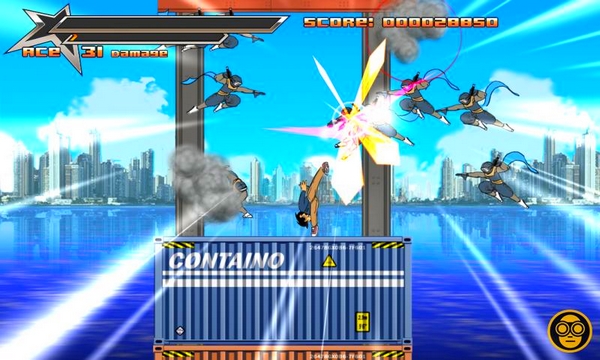
JR: Now more than ever, difficulty in games seem to be getting a bad rap. Especially if they’re considered too hard. Some developers feel it may be necessary to patch their games to appease the market. What are your thoughts?
TD: I think it’s a really tough question. Sometimes I just get so pissed at Dark Souls, wondering why I’m even playing, but then I finally get past that part and I feel great!
There was a time when a playtester said there should be blocking in Aces Wild, so I implemented it and it was totally stupid. I knew this before I even did it, but sometimes the feedback–even from a single person–can feel really powerful. Michael O’Reilly, the creator of I Wanna Be The Guy and Brave Earth, gave me some great advice about this–only give it serious thought if you hear something from multiple sources. I suppose this is difficult if you’re a AAA developer though, lol.
Difficulty is a ‘flavor’ like anything else. Certain levels are only gonna be tolerated by a few and other times, even high difficulty complements other themes in the game.
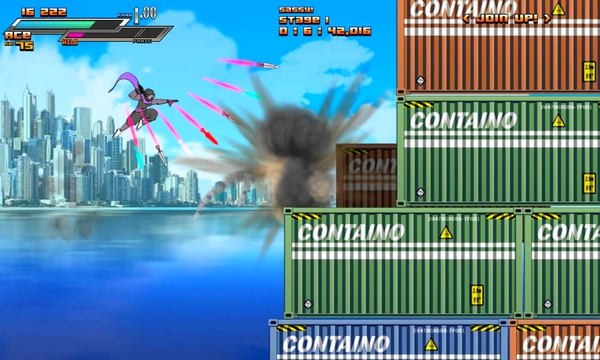
I do think there’s something noteworthy about letting more players see all the content in your games however. I think difficulty settings–as old as they are–still work really well. I think back to all the games I played on the easiest setting as a kid and how I still loved those games so much. But now that I’m older, something that’s too easy reads to me as “should be removed from the game” or made more difficult.
I’ve seen a lot of people say Undertale was too difficult and I’ve personally only beat it on a pacifist run and I think those people are totally silly.
Difficulty is a tool to be used and I think most difficult games know this. I hope other types of games, that have been made less difficult, look at other ways their systems could have been made better.
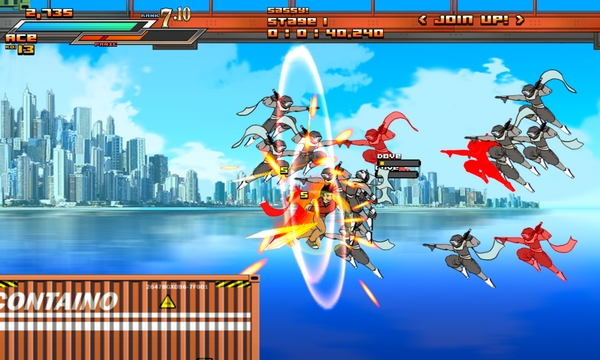
JR: Indie games are home to the most diverse games a player can find. In the future, do you see this changing in any degree? Will this stay the same?
TD: I think the indie ‘scene’ will continue to grow and become more diverse, but I think exposure to them is going to be the big question. I’m bad at predicting stuff like that, but I do think there will be more ‘popular’ indies that will overshadow others. So, hopefully all those different groups will be able to foster their own community–and double hopefully that will be as known as part of the more mainstream community.
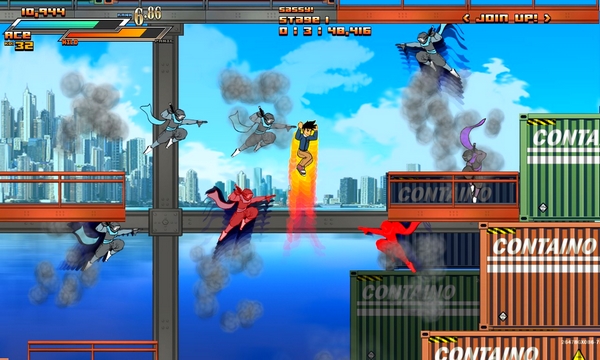
JR: For game development as a whole, what do you wish more people understood or were aware of for the process?
TD: Nothing really I suppose. Even seniors I speak with are impressed in general by the fact that I develop games, lol. But on the aspiration aspect–I hope everyone knows that anyone can get into it. You don’t have to make games you’ve seen before. You can make a super-not-difficult game.
So much of game development is looking at all the stuff you hated in old games and making that part better. Any aspect of art or technology you’re into can be made into a game or interactive experience, if that’s what you’re looking to do! The tools and community are out there and they’re totally free!
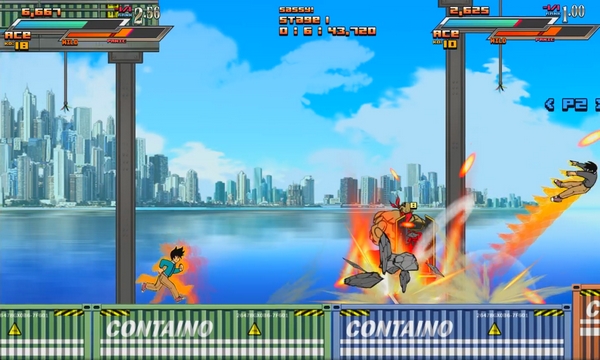
JR: Finally, what can fans look forward to from you?
TD: Lots of action games! I’ve always wanted a dungeon diving game that had interesting combat so that’s what I’m doing with Citadel Deep, my current project.
I think a lot about manic shooters. I feel like I would live with regret if I never made a competitive fighting game or a story heavy adventure game like Earthbound or Undertale — but I’m a terrible writer, so expect Action Games until I get better.
But really, I just love combat, so I hope to come up with cool new ideas and characters in that realm.
Stay Wild!
You can pummel a horde of ninjas across action packed stages in Aces Wild: Brawling Manic Action, now available.






Published: May 10, 2016 06:19 am